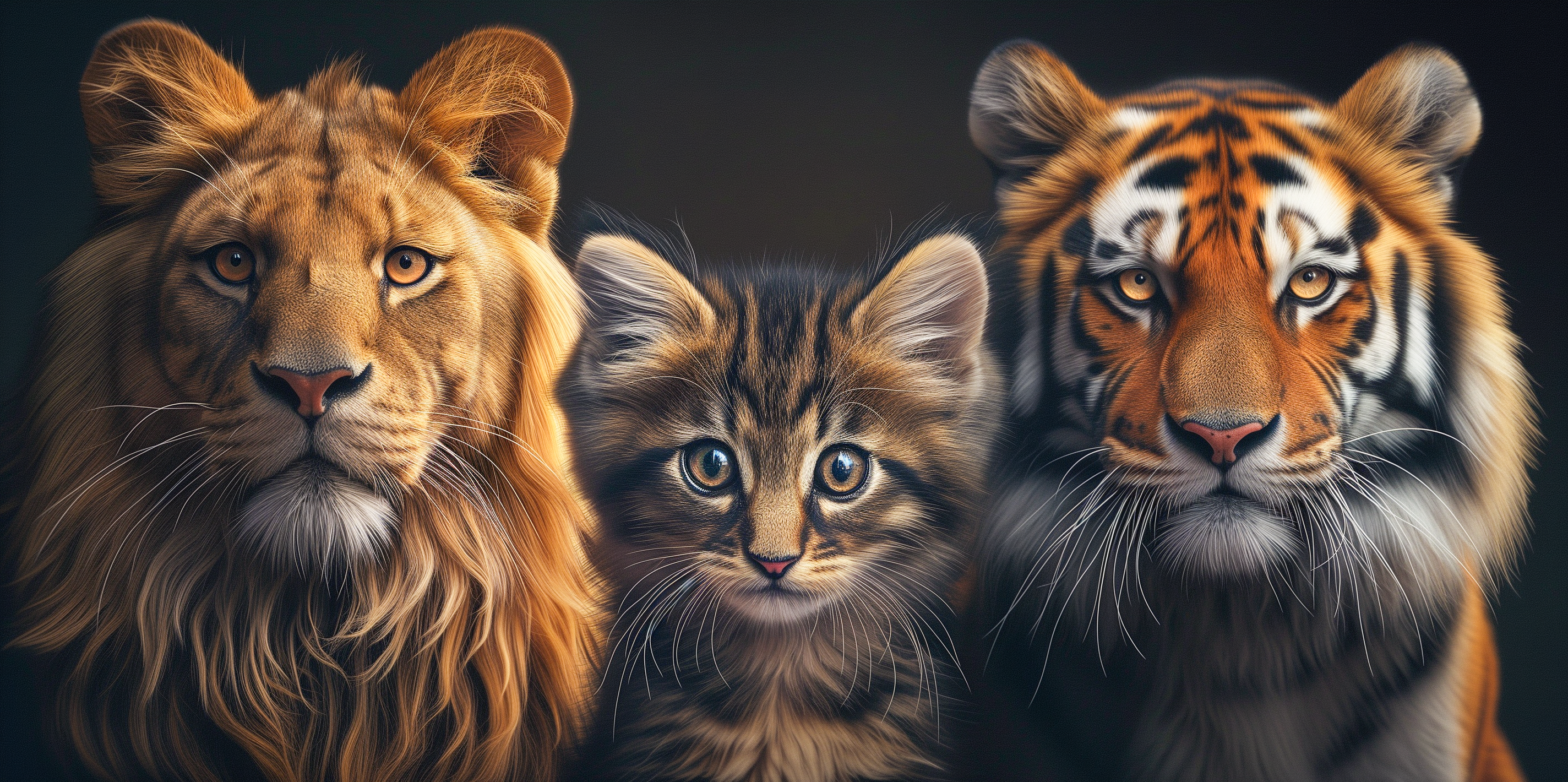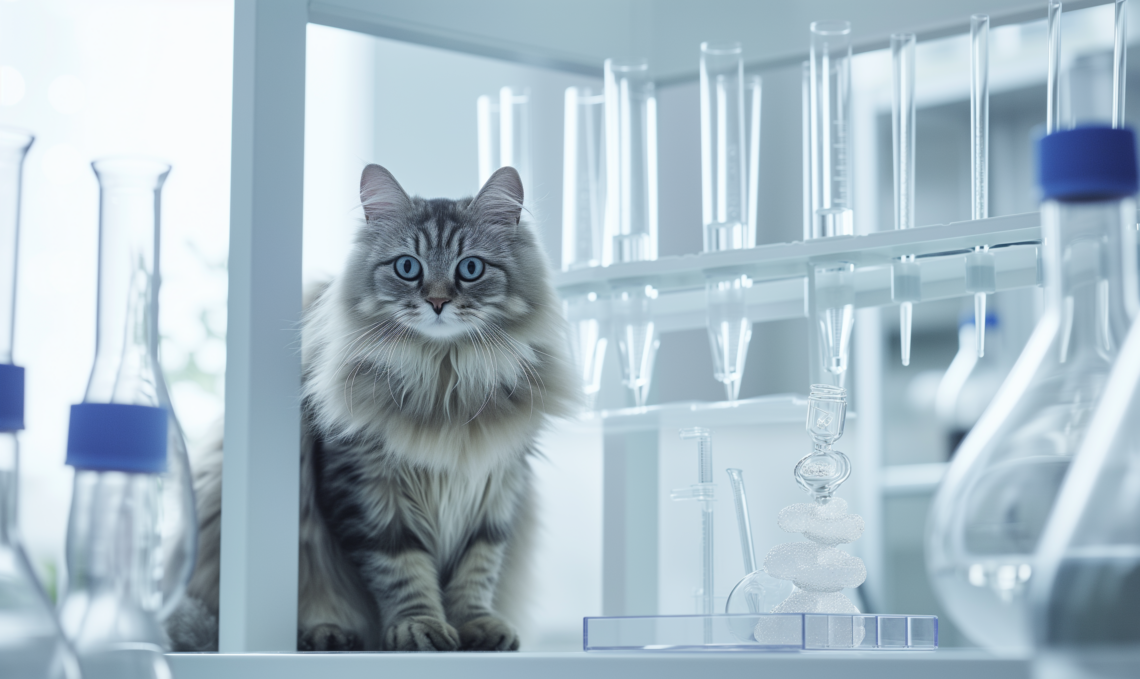In a groundbreaking study that marks a significant milestone in the field of evolutionary biology, a team of researchers at the Texas A&M School of Veterinary Medicine & Biomedical Sciences (VMBS), alongside a host of global collaborators, have unveiled key insights into cat evolution. Their work, a deep dive into the genetic framework of felines, recently published in Nature Genetics, sheds light on the unique aspects of cat genomes, offering a window into the evolutionary journey of various cat species, including the likes of lions, tigers, and domestic cats.
Cracking the Genetic Code of Cats
The study primarily focuses on understanding why cat genomes exhibit less complexity in terms of genetic variations compared to other mammals, particularly primates. The team’s findings unravel the mysteries behind the stability and simplicity of these genomes, highlighting the crucial role of specific DNA regions in species differentiation and the variation in olfactory genes among cat species.
Dr. Bill Murphy, a VMBS professor specializing in cat evolution, spearheaded this research with the aim to dissect the genetic basis of trait differences between cat species. His team’s efforts have resulted in more complete cat genomic maps, leveraging the latest technological advancements to piece together this complex puzzle.
You may also love: Basepaws Cat DNA Test Review: Unlocking the Genetic Secrets of your Feline Friends
Understanding Chromosomal Stability in Cats
One fascinating aspect of the study is the exploration of why feline chromosomes, which contain the genetic blueprint for traits such as fur color, size, and sensory abilities, are more stable than those found in other mammal groups. “Cat chromosomes across species are very similar to each other,” explained Murphy, “with far fewer duplications, rearrangements, and other types of variation than what are commonly found in great apes.”
The team’s research suggests that the frequency of segmental duplications—highly similar copies of DNA segments found elsewhere in the genome—is a key factor contributing to this stability. In contrast, primates, including humans, have significantly more of these duplications, leading to greater chromosomal rearrangements and, consequently, a broader spectrum of genetic conditions.

Unraveling the Mysteries of Feline Speciation
Another highlight of the research is the identification of specific regions in cat DNA responsible for speciation, or the differences between species. Murphy and his team discovered a significant region on the center of the X chromosome, particularly a repetitive element called DXZ4, that seems to play a pivotal role in the genetic isolation of certain cat species.
“The rapid evolution of DXZ4 in cats is one of the most intriguing findings,” said Murphy. “It’s evolving faster than 99.5% of the rest of the genome, indicating its probable link to speciation.”
Sniffing Out Genetic Variations in Cat Evolution
The study also delved into the number of olfactory genes in cats, which govern their ability to detect scents, and how these genes correlate with their social behavior and environmental interactions. “Cats rely heavily on smell to detect their prey, so their sense of smell is a critical part of their identity,” Murphy noted. The variations in these genes between species like lions and tigers suggest a direct link to their differing social structures and lifestyles.

Implications for Conservation and Further Research for Cat Evolution
This research has far-reaching implications for conservation efforts and the study of feline diseases and behavior. “These differences are showing us how these animals are perfectly suited for their natural environments,” Murphy stated. “They’re not interchangeable, which is vital information for those working to preserve or restore species in their natural habitats.”
As the team continues to apply advanced genome sequencing technologies to cat genomes, their work promises to fill in crucial gaps in our understanding of the genetic makeup of these enigmatic creatures. This study, funded by the Morris Animal Foundation, the National Science Foundation, the National Institutes of Health, and the National Institute of General Medical Sciences, stands as a testament to the power of collaborative research in unraveling the secrets of evolution.
RELATED: Best Cat DNA Kits Available
(Source: Sci Tech Daily)
Reference: “Single-haplotype comparative genomics provides insights into lineage-specific structural variation during cat evolution” by Kevin R. Bredemeyer, LaDeana Hillier, Andrew J. Harris, Graham M. Hughes, Nicole M. Foley, Colleen Lawless, Rachel A. Carroll, Jessica M. Storer, Mark A. Batzer, Edward S. Rice, Brian W. Davis, Terje Raudsepp, Stephen J. O’Brien, Leslie A. Lyons, Wesley C. Warren and William J. Murphy, 2 November 2023, Nature Genetics. DOI: 10.1038/s41588-023-01548-y









Leave a Comment